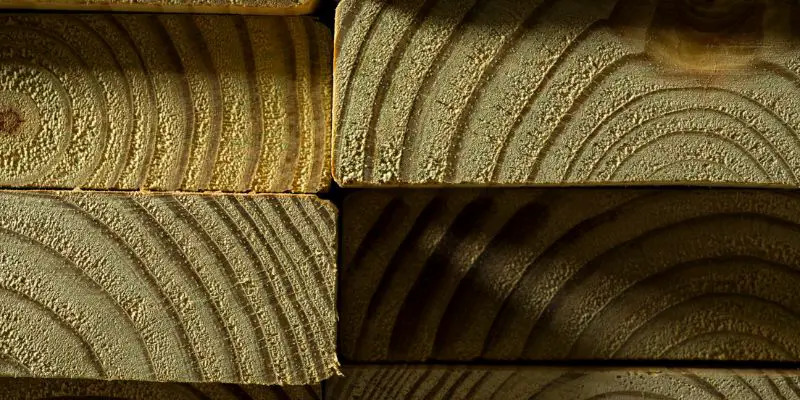Treated wood can be used indoors, but it is important to ensure that it is properly sealed to prevent any potential release of chemicals into the indoor environment. Wood is a versatile and popular material that can be used in various applications indoors, including furniture, flooring, and cabinetry.
Treated wood, specifically, is wood that has been chemically treated to protect it against decay, insects, and rot. The treatment process involves the use of chemicals such as copper-based preservatives, and although these chemicals can provide protection against pests and moisture, they can also pose potential health risks if not properly contained.
Therefore, if you are considering using treated wood indoors, it is paramount to ensure that it is properly sealed with a suitable coating or finish that creates a barrier between the wood and the indoor environment. This will help to minimize any potential release of chemicals and maintain a safe and healthy indoor environment.
The Difference Between Treated And Untreated Wood
Treated wood is infused with chemicals to resist decay and pests, making it suitable for outdoor use. However, due to the chemicals, it’s not recommended for indoor applications where people may come into direct contact with the wood. Untreated wood is a safer option for indoor projects and furniture.
When it comes to choosing wood for indoor projects, it’s important to understand the difference between treated and untreated wood. Treated wood has undergone a chemical treatment process to protect it from decay, insects, and weathering. On the other hand, untreated wood is simply raw or natural wood that has not been treated with any chemicals or preservatives.
Chemical Treatment Process
Treated wood goes through a chemical treatment process to enhance its durability and longevity. Typically, this involves pressure-treating the wood with chemicals such as copper-based compounds or preservatives like chromated copper arsenate (CCA) or alkaline copper quat (ACQ). These chemicals penetrate the wood’s fibers, forming a protective barrier against decay and insects.
In the pressure treatment process, the wood is placed in a treatment vessel and the chemicals are forced into the wood under high pressure. This ensures that the chemicals reach deep into the wood, providing maximum protection. Once the treatment process is completed, the wood is then dried and ready to be used for various indoor applications.

Benefits Of Treated Wood
Treated wood offers several advantages that make it suitable for indoor use:
- Improved Durability: The chemical treatment process gives treated wood enhanced durability, making it more resistant to decay, rot, and insect damage. This ensures that the wood will last longer, even in indoor environments where moisture and pests may be a concern.
- Protection Against Moisture: Treated wood has better resistance to moisture absorption than untreated wood. This means that it is less likely to warp, shrink, or swell when exposed to changes in humidity, making it ideal for indoor projects where moisture control is important.
- Reduced Maintenance: Due to its resistance to decay and insects, treated wood requires less maintenance compared to untreated wood. This can save you time and effort in the long run, as you won’t need to apply regular treatments or worry as much about damage from pests or decay.
- Wide Range of Applications: Treated wood is suitable for a variety of indoor applications, including flooring, furniture, cabinets, and construction projects. Its durability and protection against moisture and pests make it a versatile choice for many indoor projects.
Overall, treated wood can be a great option for indoor projects where durability, resistance to moisture, and protection against pests are important factors to consider. The chemical treatment process enhances the wood’s natural properties, allowing it to withstand the challenges of indoor environments and ensure long-lasting performance.
Indoor Uses Of Treated Wood
Treated wood is commonly used for outdoor projects such as decks, fences, and playground equipment due to its durability and resistance to rot and decay. However, many homeowners wonder if treated wood can also be used indoors. The answer is yes! Treated wood can be a great choice for various indoor applications, including interior construction projects, furniture, and decor. In this article, we will explore the different indoor uses of treated wood and how it can add both functionality and aesthetic appeal to your home.
Interior Construction Projects
When it comes to interior construction, treated wood can be an excellent option due to its strength and resistance to moisture. Whether you are building a new home or renovating an existing space, treated wood can be used for various structural elements, such as beams, joists, and framing. Its durable nature ensures long-lasting stability, making it a reliable choice for interior projects.
Treated wood can also be used for finishing touches in your home, such as baseboards, crown molding, and trim. These elements not only add a polished look to your interior but also provide protection against wear and tear. With treated wood, you can enjoy both beauty and functionality in your interior construction projects.
Furniture And Decor Applications
Treated wood can be transformed into stunning furniture pieces that enhance the aesthetics of your home. From dining tables and chairs to bookshelves and cabinets, treated wood furniture can bring a rustic charm or a modern touch, depending on your design preferences. Its durability ensures that your furniture will withstand daily use and continue to look beautiful for years to come.
In addition to furniture, treated wood can be used for decorative accents in your home. Wall paneling, shelving units, and headboards made from treated wood can create a warm and inviting atmosphere. Whether you prefer a contemporary or traditional look, treated wood can be customized to suit your style and add character to your interior design.
When using treated wood for indoor furniture and decor applications, it is essential to properly seal and finish the wood to prevent any off-gassing or exposure to chemicals. Be sure to follow the manufacturer’s instructions or consult a professional to ensure the safe and environmentally friendly use of treated wood in your home.
In conclusion, treated wood is not limited to outdoor projects but can also be utilized indoors for a variety of applications. Whether you’re considering interior construction projects or looking to add furniture and decor to your home, treated wood can offer both functionality and style. Make the most of its durability and resistance to moisture, and bring the natural beauty of treated wood into your indoor spaces.
Considerations And Precautions
When utilizing treated wood indoors, several considerations and precautions should be taken into account to ensure the safety of occupants and the environment. It is essential to understand the potential health risks and environmental impact associated with using treated wood indoors.
Potential Health Risks
Insufficient ventilation can lead to the accumulation of harmful chemicals emitted by treated wood, such as arsenic and copper. Exposure to these substances can result in respiratory issues, skin irritation, and other health concerns. It’s crucial to minimize direct contact with treated wood and maintain adequate ventilation to mitigate health risks.
Environmental Impact
Using treated wood indoors may contribute to environmental contamination if not managed properly. Improper disposal of treated wood can lead to soil and water pollution due to the leaching of chemicals. Responsible handling and disposal of treated wood is essential to prevent environmental harm and protect natural resources.
Regulations And Standards
When it comes to using treated wood indoors, it is crucial to be aware of the regulations and standards in place. Building codes, certification programs, and guidelines provide the necessary framework to ensure the safe and appropriate use of treated wood indoors.
Building Codes
Building codes are a set of rules and regulations that dictate the minimum standards for construction and safety. These codes vary from region to region and outline specific requirements for various aspects of building design and materials, including the use of treated wood. Compliance with building codes is essential to ensure the structural integrity and safety of indoor spaces.
When considering the use of treated wood indoors, it is vital to consult the local building codes to determine if there are any restrictions or specific requirements to be followed. Building code officials, architects, or contractors can provide guidance on the appropriate use of treated wood in indoor construction projects.
Certification Programs
Certification programs play a significant role in ensuring that treated wood products meet quality, safety, and environmental standards. These programs involve third-party organizations that conduct independent assessments and inspections to verify compliance with specific criteria.
When selecting treated wood for indoor use, it is important to look for certifications such as the American Wood Protection Association (AWPA) standards or the International Code Council (ICC) Evaluation Service Report. These certifications provide assurance that the treated wood has undergone rigorous testing and meets industry-approved standards for performance, durability, and environmental safety.
The AWPA standards outline different treatment levels based on the intended use of the wood. For indoor applications, such as framing or furniture, using treated wood with a lower treatment level may be acceptable. However, it is crucial to ensure that the treated wood meets the specific requirements outlined by the relevant certification program.
Summary
Before using treated wood indoors, it is essential to familiarize yourself with the regulations and standards in your region. Building codes and certification programs provide guidelines and ensure the safe and appropriate use of treated wood in indoor construction projects. Adhering to these regulations not only promotes the structural integrity and safety of the space but also ensures compliance with environmental and quality standards.
Alternative Indoor Wood Options
When it comes to choosing wood for indoor applications, treated wood may not always be the best option. While treated wood is highly effective for outdoor use due to its resistance to decay and insects, it may emit harmful chemicals when used indoors. Fortunately, there are alternative wood options that are safer and more suitable for indoor environments. In this article, we will explore two popular alternatives: non-treated wood and composite/engineered wood products.
Non-treated Wood Alternatives
Non-treated wood, also known as untreated or natural wood, is an excellent choice for indoor projects. It provides a natural and warm aesthetic appeal, making it a popular option for interior design. Non-treated wood can be used for a variety of indoor applications, including furniture, cabinets, flooring, and trim. It is important to note that non-treated wood may require additional maintenance and protection against moisture, as it is more susceptible to rot and decay compared to treated wood.
Here are some key advantages of non-treated wood alternatives:
- Environmentally-friendly and sustainable
- Less likely to emit harmful chemicals
- Offers a wide variety of wood species and finishes
- Allows for customizations and personalization
- Can be refinished or repaired if damaged
Composite And Engineered Wood Products
Composite and engineered wood products are another viable alternative for indoor applications. These wood alternatives are made by combining various materials, such as wood fibers, resin, and adhesives, to create a durable and versatile product. Composite and engineered wood products offer benefits such as enhanced stability, resistance to moisture and humidity, and a more consistent appearance compared to natural wood.
There are several types of composite and engineered wood products available:
- Medium-Density Fiberboard (MDF): Made from compressed wood fibers, MDF is a versatile option for indoor projects due to its smooth surface and ability to be painted.
- Plywood: Constructed from multiple layers of thin wood veneers, plywood offers strength and durability. It is commonly used for cabinets, furniture, and subflooring.
- Particleboard: Composed of wood particles and adhesive, particleboard is an affordable option for furniture and cabinets, though it may not be as durable as other alternatives.
Composite and engineered wood products have their own unique advantages:
- Stable and resistant to warping or shrinking
- Available in various thicknesses and sizes
- Less susceptible to rot, insects, and moisture damage
- Can be more cost-effective than natural wood
- Offers consistent quality and appearance

Frequently Asked Questions For Can Treated Wood Be Used Indoors
Why Can’t You Use Pressure Treated Wood Inside?
Pressure-treated wood cannot be used inside because it contains chemicals that can be harmful when exposed to human contact or when the wood is breathed in. Always use appropriate wood for indoor projects to ensure safety and avoid any potential health risks.
Is It Against the Code To Use Pressure Wood Indoors?
Using pressure-treated wood indoors is generally not recommended as it can release chemicals that may be harmful to human health. It is important to follow building codes and regulations to ensure the safety of occupants.
How Do You Seal Pressure Treated Wood For Indoor Use?
Sealing pressure-treated wood for indoor use involves using a polyurethane sealant. Sand the wood, apply the sealant evenly, and let it dry completely before use. Choose a low-VOC sealant to minimize indoor air pollution. Regularly reapply the sealant to maintain protection.
How Long Does Treated Wood Last Indoors?
Treated wood can last a long time indoors, typically around 20 to 30 years.
Conclusion
Treated wood can be used indoors, but it is important to choose the right type for the specific application. Understanding the treatment process and selecting appropriate products will ensure the safety and longevity of indoor wood construction. With the proper care and maintenance, treated wood can be a reliable and durable option for indoor use.



2 thoughts on “Can Treated Wood Be Used Indoors? Discover the Surprising Truth!”